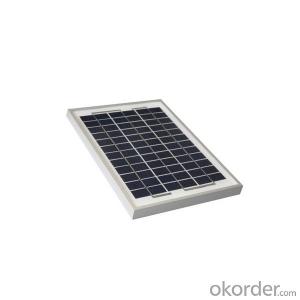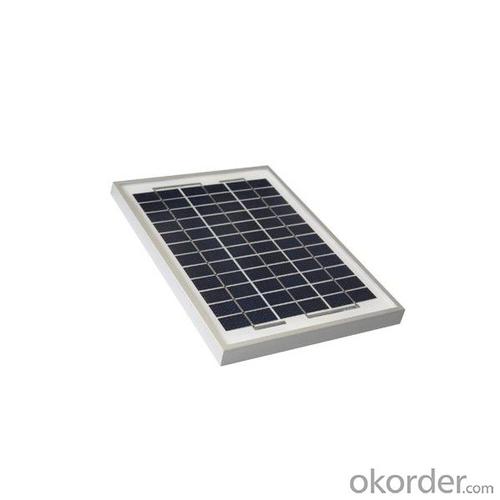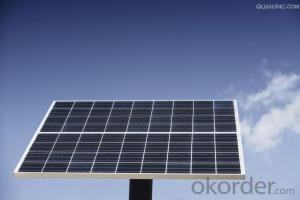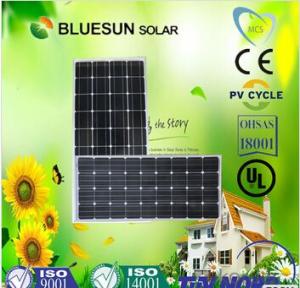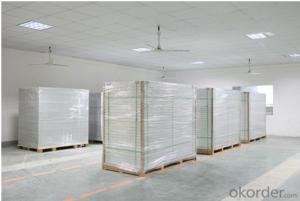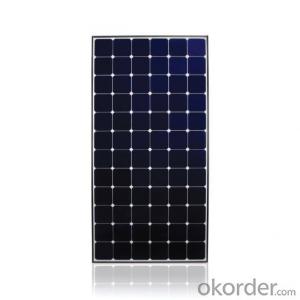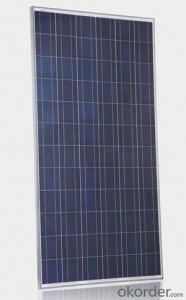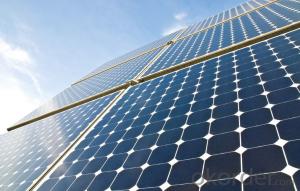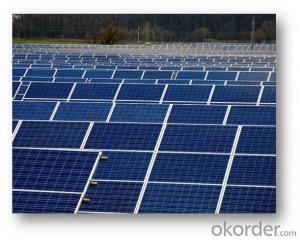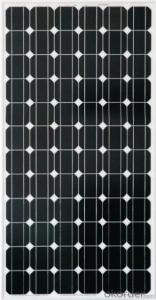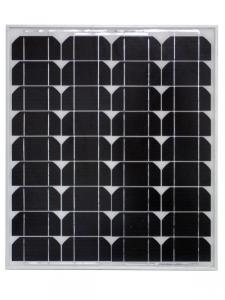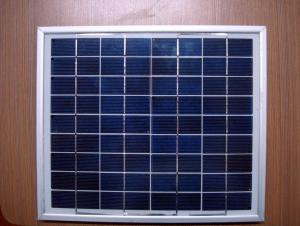Gp Solar Panels 5W Monocrystalline Solar Module for Sale
- Loading Port:
- Shanghai
- Payment Terms:
- TT OR LC
- Min Order Qty:
- 10000 watt
- Supply Capability:
- 1000000 watt/month
OKorder Service Pledge
OKorder Financial Service
You Might Also Like
Specification
Product Description
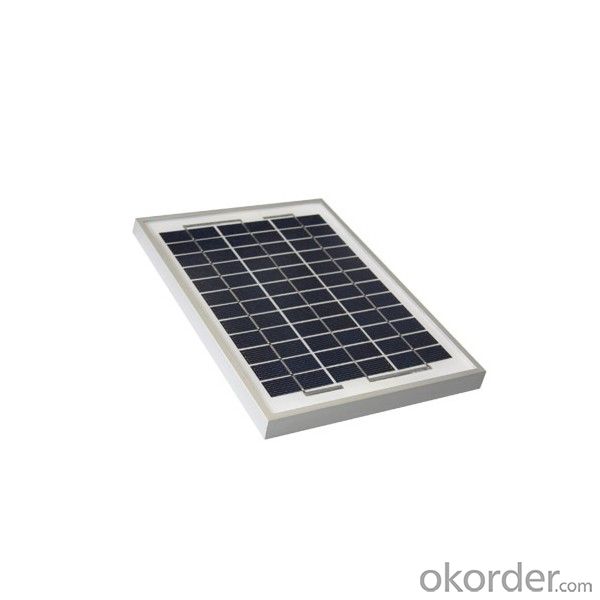
5w monocrystalline solar module
Product Description
Mechanical Characteristics | |
| Cell type | mono-crystalline silicon solar cells |
| Cell layout | 2*18 |
| Number of cells | 36pcs |
| Module dimensions | 265*200*25mm |
| Frame | anodized aluminum,grey or black |
| Junction box | IP65 |
| Connectors | MC4 or MC4 compatible(optional) |
| Net weight | 0.75kg |
| Packing | 10pcs/ctn |
| Electrical Characteristics | |
| Peak power(Pmax) | 5W |
| Power tolerance | ±3% |
| Max.system voltage | 715VDC |
| Open circuit voltage(Voc) | 21.5V |
| Short circuit current(Isc) | 0.32A |
| Max.power voltage(Vmp) | 17.5V |
| Max.power current(Imp) | 0.29A |
| Temperature coefficients of Isc | 0.035%/ºC |
| Temperature coefficients of Voc | -0.33%/ºC |
| Temperature coefficients of Pmax | -0.43%/ºC |
| Cell Efficiency | ≥17% |
| FF | 73% |
| Standard Test Condition(STD) | Irradiance:1000W/m²;Cell temperature:25ºC;AM:1.5 |
Features:
1) High reliability with guaranteed +/-3% output power tolerance
2) The modules can withstand high wind-pressure, snow loads and extreme temperatures
3) Bypass diodes to minimize power loss with shading
4) High and stable conversion efficiency to ensure the highest quality
Quality and Safety
1) Industry leading power output warranty, 25 year 80%, 10 year 90% power warranty and 3 year power warranty
2) ISO9001: 2008 (Quality Management system) certified factory
3) Product Quality warranty & products Liability Insurance to guarantee and user' benefits
EN 6100-6-3: 2007 EN 6100-3-1: 2007(IEC 61000-4-2: 2008
Our advantages:
High quality materials: High insulation TPT, Anti-aging EVA
Focus on each process during manufacture
Experienced engineers and workers
Fast delivery: 7-15 DAYS High efficiency and long time warranty
- Q: I am interested in installing a home solar panel system. In my city, we get a little over 5 hours of sun, and I typically use about 800-900 kwh per month.The available roof space is small- approximately 600 sqft.The online calculators provided on various sites are not uniform, thus providing inconsistent responses with the same input data.I think I need a 5kw system approximately. Can anyone verify that and provide a link for a reasonably priced system to meet my needs? Prefer grid-tied, but off-grid is acceptable as well.Thanks!
- And at what tilt? Are there trees, poles, or buildings that cast a shadow on the roof at any time? Is the space clear of vent pipes (these can be moved, but it's extra work and cost)? Probably your best move is to contact a solar installer, and get a free quote on a system. Have them quote a system that you own, not a lease. They will do an analysis of your home, which will be very valuable even if you decide not to use a professional. If there are no professional installers in your area, that's an indication that your area may not be good for solar.
- Q: Can solar panels be used in areas with extreme temperatures?
- Yes, solar panels can be used in areas with extreme temperatures. Solar panels are designed to withstand a wide range of temperatures, including both extreme heat and cold. However, it's important to note that extreme temperatures can affect the efficiency and performance of solar panels. High temperatures can cause a slight reduction in energy output, while extremely low temperatures can decrease the efficiency temporarily. Nonetheless, solar panels are still a viable and effective renewable energy solution in areas with extreme temperatures.
- Q: Can solar panels be used in cold climates?
- Yes, solar panels can be used in cold climates. In fact, cold temperatures can actually improve the efficiency of solar panels by allowing electrons to flow more easily. However, it is important to ensure that the panels are properly installed and maintained to withstand extreme weather conditions and snow accumulation.
- Q: Can I make a solar panel at home?How to make it?
- The first link is a video on how to make solar cells from powdered donuts and tea. But you probably want to make solar panels from scrap solar cells. The second video is on how to make solar panels from scrap solar cells. You used to be able to get damaged cells for free but so many people have been piecing them together that they sell them now. You've kinda missed the boat on solar panels for work alone.
- Q: Can solar panels be installed on a university campus or educational facility?
- Yes, solar panels can certainly be installed on a university campus or educational facility. In fact, many educational institutions have already embraced solar energy as a sustainable and cost-effective solution. Installing solar panels can help universities reduce their carbon footprint, save money on energy costs, and serve as an educational tool for students to learn about renewable energy.
- Q: How much space is needed to install solar panels?
- The amount of space needed to install solar panels varies depending on factors such as the size of the panels, the efficiency of the system, and the energy requirements of the property. On average, a typical residential solar panel system requires about 100-400 square feet of roof space per kilowatt of installed capacity. However, it's important to consult with a solar installer to determine the specific space requirements for your property.
- Q: Im looking at making a self build iPad solar panel charger, Is it possible to get a small solar panel, a battery to hold charge and then a USB output? nothing fancy, just power in and power out?
- You would need a pretty hefty panel, the standard power charger is like 0 watts. You would need more than that for the overhead of charging a battery and converter loss. You would need a regulated supply, like a car ipad adapter, I seen them for like 20 bucks. They have to say Ipad , the ipod/iphone chargers have less power and would charge much slower.
- Q: Can solar panels be installed in urban areas?
- Yes, solar panels can be installed in urban areas. In fact, urban areas provide ample opportunities for solar panel installations on rooftops, parking lots, and other available spaces. With advancements in technology and design, urban solar installations have become more efficient and aesthetically pleasing, contributing to the overall sustainability and energy independence of cities.
- Q: I am thinking of buying a 3w solar panel called the nomad 3 from goal zero. I want to charge 35Wh lithum batteries. I have heard that lithium batteries are temperatmental and without a regulated current things could get ugly.I have a couple of chargers that came with the batteries. One is a 2v car charger and another is 0-240v wall charger.Goal zero sell something called a sherpa 50, which contains rechargeable batteries and an inverster and I think they suggest that I charge my batteries indirectly through the Sherpa 50, however, the sherpa 50 is expensive at $200, and seems to have a small capacity, in addition to being extra weight that i don`t want to carry.Electronics geniuses, you are my only hope.
- If you want to energy each USB ports on the identical times, It could not be possibble. Your sun panel best provides 2.24 Watts (20V * 0.2A) of energy and you ought to deliver 2.5 Watts (5V * 0.5A) to the ports. Subtracting any losses out of your regulator(s), you are going to be method over your vigor finances. You'll want extra of a sun panel or less of a load.
- Q: Hoping to find instruction, materials list and hardware needed to construct solar panels myself, how many and make it happen instead of talking about it
- Silica based solar cells are not the kind of thing you whomp up in you basement. Here are a couple ideas for solar systems you can build and install yourself. Take a 4 x 8 sheet of /2 inch plywood. Frame sides with 2 x 4's. Screw tin cans in a staggered row (checker board) pattern inside frame. The more cans the more heat you get so place them nearly touching. Paint cans and entire assembly flat black. Cover top with glass, plexiglass (best) or heavy mill clear plastic (cheapest)Place on roof. Drill 3-4 inch holes in opposing sides. Run pipe or tubing into house. Attach to small low speed fan. The black paint will absorb sunlight and heat. The air moving through box will carry heat into house. It's a cheap efficient way to help heat your home. You can vary size and shape of box to fit your roof. If you use more than one box, hook them up in series. More boxes mean more surface area means more heat. To heat water. Take a steel tank. A car gas tank works well. It is galvanized so it won't rust, is cheap, and easily available at any auto salvage yard. But you will have to flush in throughly to remove gasoline odor. A steel 55 gallon drum is easier to work with but may cost more. Paint exterior of tank flat black. Weld/glue/clamp water pipes to tank. Place on ground in area that gets lots of sunlight. Attach water supply to tank and route discharge pipe to house or appliance. Black painted steel absorbs heat from sun light and heats water. In spring and fall you get warm to hot water. In summer you get scalding hot water and in winter you get cold to luke warm water. Both of these solar powered systems are seasonal and their output varies according to location and climate, but they are very inexpensive and easy to build and provide FREE heat and/or hot water for many years with little or no maintainence.
Send your message to us
Gp Solar Panels 5W Monocrystalline Solar Module for Sale
- Loading Port:
- Shanghai
- Payment Terms:
- TT OR LC
- Min Order Qty:
- 10000 watt
- Supply Capability:
- 1000000 watt/month
OKorder Service Pledge
OKorder Financial Service
Similar products
Hot products
Hot Searches
Related keywords
